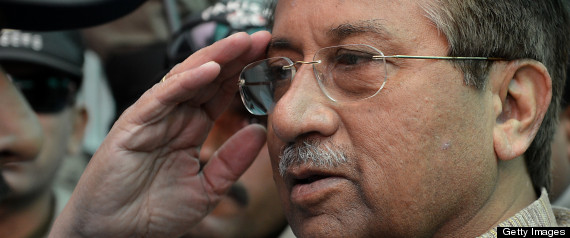India eventually decided, after examining the pros and cons of widening the conflict across the Line of Control (LoC) or even across the international border, on a strategy of containment within the narrower objective of regaining the Kargil heights. This narrower framework meant higher casualties on the Indian side because of the difficulty of traversing slopes against dug-in defenders where the terrain offers no cover.
New Delhi calculated that it does have the political will and military morale, despite the heavy casualties, and can sustain the cost in human and material terms. A near-consensus domestically and the willingness of the Indian military command to accept constraints allowed India to continue with an operation in which it suffered disproportionately heavy casualties.
With regard to Pakistan, the intriguing question is whether the Kargil heights seizure was part of the normal stepping up of guerrilla activity during summer, or whether it had more ambitious objectives. If it were the former, little can be added, except to mention in passing a failure of Indian intelligence. The guerrillas’ presence was only discovered by accident when two Indian army patrols happened to spot them. The true extent of the guerrilla presence did not sink in until the Indian army had carried out an aerial survey of the area, which revealed that between 400 to 700 guerrillas had seized the heights. This could have put them in a position in any future war to threaten the sole overland logistics link with the Indian forces deployed in Siachen, i.e. the Srinagar-Drass-Kargil-Leh road.
But the Kargil seizure could have other strategic objectives with military, political and diplomatic dimensions. Militarily, if the seizure could be maintained for a reasonable period of time and at least until winter sets in, it could open up possibilities of forcing either an Indian withdrawal from Siachen, or a trade-off between the Kargil heights and the Siachen Glacier.
Politically, it could reflect the impatience in Islamabad with lack of progress in bilateral discussions on Kashmir under the Lahore Declaration process after the fall of the BJP government in end-April. Despite the fact that Prime Minister Atal Behari Vajpayee of India heads a caretaker government until elections are held in September-October, the hope may have been to force New Delhi back to the negotiating table in a serious mode. Diplomatically, since the bilateral process had not yielded results, an internationalisa-tion of the Kashmir issue may have been sought to bring it back onto the frontburner.
If we assume for the sake of argument that all or some of these objectives formed part of the Pakistani thrust into Kargil, or at least were taken on board once things hotted up on the Line of Control, we can examine the results achieved or likely to be achieved in the foreseeable future and then draw up a balance sheet of gains and losses.
Missing Kashmir for Kargil
Militarily, the inherent difficulty of holding on to the Kargil heights in the face of overwhelming firepower and numbers has become a key question as the battle drags on. India has weighed the costs of heavy casualties against the bigger costs of potentially adverse international intervention if the conflict is widened. It has relied on the political consensus to hold on to Kashmir no matter what the cost, which informs its domestic political spectrum (the weak and scattered chinks of rationality represented by liberal opinion notwithstanding). India’s slow but definite gains against the guerrillas have produced collateral pressures for a withdrawal of the guerrillas from what is turning into a suicidal mission.
The political timing of the Kargil seizure, if the idea was indeed to force New Delhi back to serious negotiations, could not have been worse. A caretaker government heading into an election was hardly likely to be in a position to negotiate, let alone offer any flexibility or concession on such a major issue. There has been speculation in the Indian press after the visit to Pakistan by the US emissary General Anthony Zinni regarding proposals purportedly from Islamabad for India to allow safe passage to the guerrillas, quoting the precedent of the Hazrat Bal shrine siege. Whether these reports hold any water or not is not known.
However, Western diplomatic pressure on Islamabad is mounting, especially after Prime Minister Nawaz Sharif’s visit to Washington DC and London, and these could take various forms, economic, political, diplomatic. The dependence of the Pakistani economy on the goodwill of the West, and particularly the US, to keep foreign fund flows going makes Pakistan that much more vulnerable to ‘persuasion’.
It goes without saying that such ‘persuasion’ seeks to maintain the status quo on Kashmir, while advocating peaceful negotiations. Pakistan’s experience indicates that retaining the status quo has always proved favourable to India. Any disturbance of New Delhi’s hold on Kashmir, even if partial or temporary, serves to refocus the attention of the global community on a long-neglected, festering wound. But in trying to disturb the status quo in its favour, the manner in which Pakistan pursues this tactical goal is crucial. This cannot happen by ignoring the ground reality.
The Pakistani army chief, General Pervez Musharraf, put his finger on the problem by describing Kargil as “a tactical, military issue”, while Kashmir as such was “a strategic, political” one. In other words, to see only the Kargil part of the picture represented by the Kashmir problem, is to miss the forest for the trees. However, in the present instance, Islamabad appears to have failed to persuade the global powers-that-be of the justness of this linkage. On the contrary, opinion seems to have hardened in the West that the status quo must be restored before diplomatic “business as usual” can be resumed.
Most thinking people in Pakistan are by now convinced that there is no (regular) military option to obtain a solution to Kashmir, particularly after both India and Pakistan have demonstrated their nuclear capability. The irregular military option (guerrilla war) faces considerable political and ideological disabilities, especially since the Kashmir guerrilla movement has acquired a fundamentalist hue over time. This does not appear to be sufficiently inspiring for large numbers of the Kashmiri people who are well known for their traditional religious tolerance. This despite continuing repression by the Indian military in Kashmir.
Prime Minister Nawaz Sharif has been castigated by the right-wing, religious, fundamentalist opinion for stating an obvious truth that without both India and Pakistan going beyond their “stated positions”, no solution to the Kashmir problem is possible. The hue and cry against him for saying that, particularly in the Urdu press, reflects the limitations which restrict the country’s political leadership. No flexibility, political or diplomatic, is allowed to any Pakistani leader to even explore some middle ground. Any such suggestion is treated as treason, betrayal, the worst kind of skullduggery. For such ideologically ‘pure’ elements, it is either all or nothing as far as Kashmir is concerned.
Before it is too late, sober heads must begin to ponder how much cloth we have remaining and how to cut it. Passion cannot replace cool calculation required for a strategic plan for peace. The Pakistani leadership must take into account a heavily dependent economic structure, an inability to rouse the world’s conscience beyond rhetoric, and the lack of a solid consensus across the






